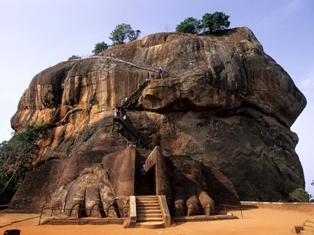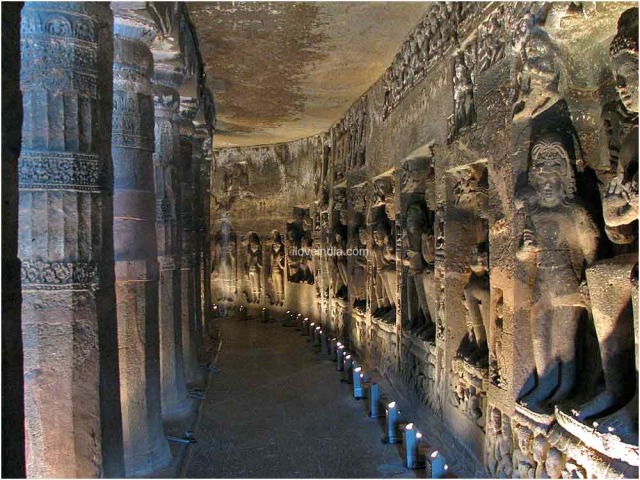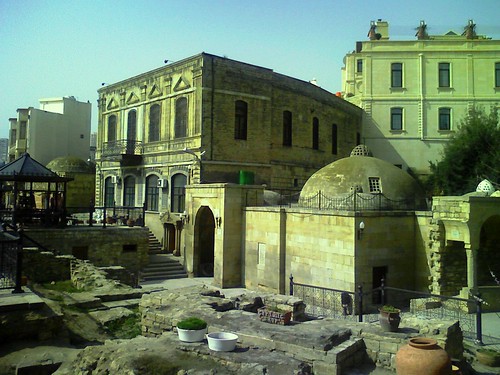Wonders Never Cease! Seven Lesser-Known Marvels.
The world's marvels are numerous and awe-inspiring, but it's time to update the Medieval-age list of the Seven Wonders of the World with these additional seven extraordinary sites. For their beauty, ingenuity, and sheer marvel, these seven sites are listed by the UNESCO World Heritage Centre as sites of outstanding universal value. Will these "masterpieces of human creative genius" make it onto your bucket list, as well?
The Metéora: Monastery in the Clouds
The Metéora (Greek for "suspended in the air") is a massive complex of monasteries built on nearly inaccessible sandstone peaks at the northwestern edge of Thessaly in central Greece. Twenty-four of the monasteries were originally built under nearly impossible conditions—goods and people were hauled up the steep rock in nets—in the fifteenth century, and the complex continued to be built through the seventeenth century. Four of the monasteries are still used religiously today.

The Metéora (Greek for "suspended in the air") is a massive complex of monasteries built on nearly inaccessible sandstone peaks at the northwestern edge of Thessaly in central Greece. Twenty-four of the monasteries were originally built under nearly impossible conditions—goods and people were hauled up the steep rock in nets—in the fifteenth century, and the complex continued to be built through the seventeenth century. Four of the monasteries are still used religiously today.

__________________
The Banaue Rice Terraces: Man and Earth in Harmony
Perhaps nowhere else in the world is the relationship between man and his environment (and with his fellow man) as seamless as at the Banaue Rice Terraces, which were carved into the high, steep mountains of Ifugao in the Philippines two thousand years ago. The terraces and the cooperative maintenance of them by indigenous rice farmers remain unchanged today. There's no reason to modernize; the rice terraces are cultivated according to very sophisticated agricultural engineering techniques.

Perhaps nowhere else in the world is the relationship between man and his environment (and with his fellow man) as seamless as at the Banaue Rice Terraces, which were carved into the high, steep mountains of Ifugao in the Philippines two thousand years ago. The terraces and the cooperative maintenance of them by indigenous rice farmers remain unchanged today. There's no reason to modernize; the rice terraces are cultivated according to very sophisticated agricultural engineering techniques.

Many legends surround the Tower of Hercules, the only lighthouse of Greco-Roman antiquity that is still somewhat structurally sound and functional. It still serves as a lighthouse and landmark at the entrance of La Coruña Harbor in Spain, and has done so since the late first century. The tower was restored in the 1700s by architect Eustaquio Giannini, and further Roman masonry was discovered in an excavation in the 1990s.

Sigiriya: The Lion Mountain
Ceylonese King Kassapa I built the ancient capital city of Sigiriya at the summit of a granite peak (called the Lion's Rock) that's surrounded on all sides by jungle. To gain access to the site, one must walk through a series of staircases that emerges from the mouth of an enormous brick-and-plaster lion.


--Ceylonese King Kassapa I built the ancient capital city of Sigiriya at the summit of a granite peak (called the Lion's Rock) that's surrounded on all sides by jungle. To gain access to the site, one must walk through a series of staircases that emerges from the mouth of an enormous brick-and-plaster lion.


Toruń, Poland: Home of Copernicus
The city of Toruń, Poland, traces its origins back to the mid-thirteenth century, when Teutonic Knights built a castle on the site as a base for the conquest and evangelization of Prussia. The city later developed a commercial role as part of the Hanseatic League, a medieval trade alliance among cities in medieval Northern Europe. Fourteenth- and fifteenth-century structures, including the house of Copernicus, remain standing throughout the city.

The city of Toruń, Poland, traces its origins back to the mid-thirteenth century, when Teutonic Knights built a castle on the site as a base for the conquest and evangelization of Prussia. The city later developed a commercial role as part of the Hanseatic League, a medieval trade alliance among cities in medieval Northern Europe. Fourteenth- and fifteenth-century structures, including the house of Copernicus, remain standing throughout the city.

The Ajanta Caves: Buddhist Masterpieces
The first Buddhist cave monuments in Ajanta, India, date from the second and first centuries BCE. Many more colorfully decorated caves, which are considered masterpieces of Buddhist art, were added during the Gupta period (the fifth and sixth centuries CE).




The first Buddhist cave monuments in Ajanta, India, date from the second and first centuries BCE. Many more colorfully decorated caves, which are considered masterpieces of Buddhist art, were added during the Gupta period (the fifth and sixth centuries CE).




The Walled City of Baku: A Living Medieval City
The Walled City of Baku, Azerbaijan, was built on a site that has been inhabited since the Paleolithic period and that bears evidence of Zoroastrian, Sassanian, Arabic, Persian, Shirvani, Ottoman, and Russian cultures. The city contains such architectural antiquities as the Inner City (Icheri Sheher), the Maiden Tower (Giz Galasy), and Shirvanshah's Palace, which range in date from the seventh century BCE to the fifteenth century CE.



The Walled City of Baku, Azerbaijan, was built on a site that has been inhabited since the Paleolithic period and that bears evidence of Zoroastrian, Sassanian, Arabic, Persian, Shirvani, Ottoman, and Russian cultures. The city contains such architectural antiquities as the Inner City (Icheri Sheher), the Maiden Tower (Giz Galasy), and Shirvanshah's Palace, which range in date from the seventh century BCE to the fifteenth century CE.



Best Regards,
Email:- jaifbindas@live.com

No comments:
Post a Comment